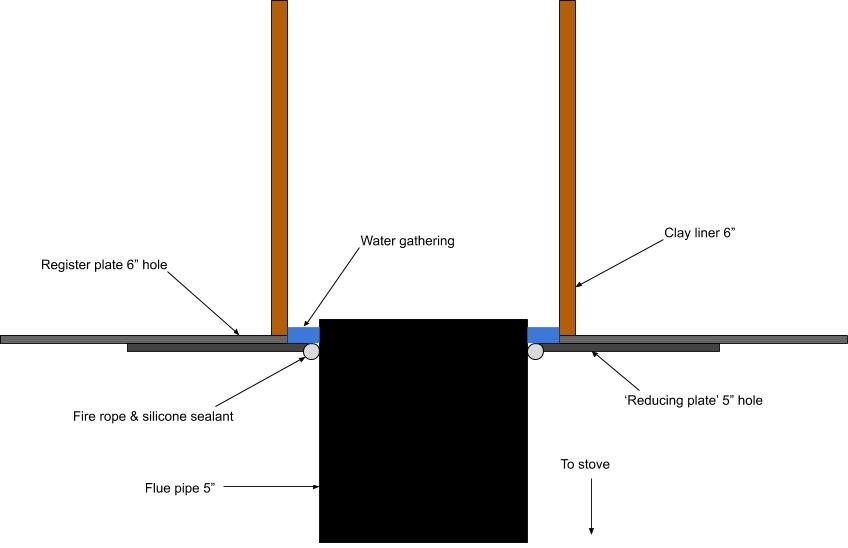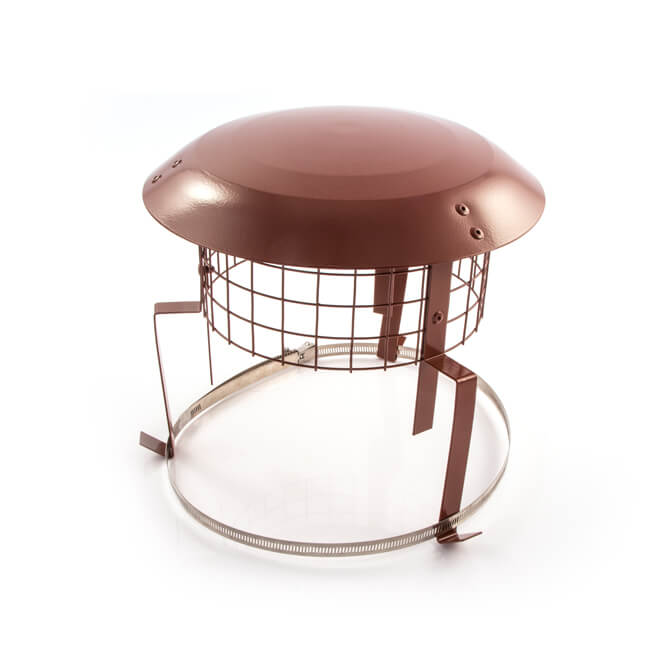Hi all,
We had a woodburner fitted during the summer, all above board, certificates issued etc Not long afterwards, during heavy rain, water started leaking from the top of the flue where it meets the register plate There is a rope ‘seal’ around the top of the flue. I spoke to the installer who said this was rare but normal and during heavy rain, water will come down the liner and potentially find it’s way through the rope seal.
3 months later and it’s raining outside and we’re having to wipe the flue every few minutes to catch the long, black drips that are running down it.
I've had the fitter back who’s fitted a different cowl which has an extra flat layer that should shed the water better. Needless to say, it doesn’t and rain is still coming in. I also asked him to replace the fire rope around the top of the flue as it had gone black with all the water soaking through it and smelt like 1000 concentrated cigarettes, he applied silicone followed by the fire rope.
We’ve had the fire on for the first time tonight and about an hour in I heard a sizzling noise and water began weeping through the fire rope. Which has again gone black and stinks. Prior to the work being done I had the clay liner inspected which showed it to be in 'excellent condition and very clean'.
Personally, I think something is fundamentally wrong with the install and I’ve lost confidence in the fitter’s ability/desire to solve the problem. The diagram below shows what I mean:
This looks fundamentally flawed to me, there is always going to be a void where water/soot can gather due to the difference in size between the flue and the clay liner.
Can anyone offer advice on whether this is correct?
We had a woodburner fitted during the summer, all above board, certificates issued etc Not long afterwards, during heavy rain, water started leaking from the top of the flue where it meets the register plate There is a rope ‘seal’ around the top of the flue. I spoke to the installer who said this was rare but normal and during heavy rain, water will come down the liner and potentially find it’s way through the rope seal.
3 months later and it’s raining outside and we’re having to wipe the flue every few minutes to catch the long, black drips that are running down it.
I've had the fitter back who’s fitted a different cowl which has an extra flat layer that should shed the water better. Needless to say, it doesn’t and rain is still coming in. I also asked him to replace the fire rope around the top of the flue as it had gone black with all the water soaking through it and smelt like 1000 concentrated cigarettes, he applied silicone followed by the fire rope.
We’ve had the fire on for the first time tonight and about an hour in I heard a sizzling noise and water began weeping through the fire rope. Which has again gone black and stinks. Prior to the work being done I had the clay liner inspected which showed it to be in 'excellent condition and very clean'.
Personally, I think something is fundamentally wrong with the install and I’ve lost confidence in the fitter’s ability/desire to solve the problem. The diagram below shows what I mean:
This looks fundamentally flawed to me, there is always going to be a void where water/soot can gather due to the difference in size between the flue and the clay liner.
Can anyone offer advice on whether this is correct?





